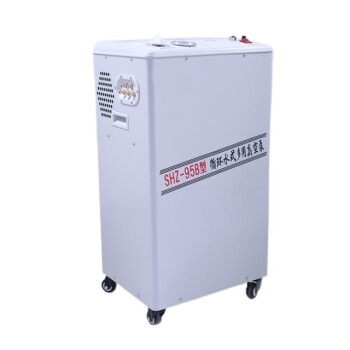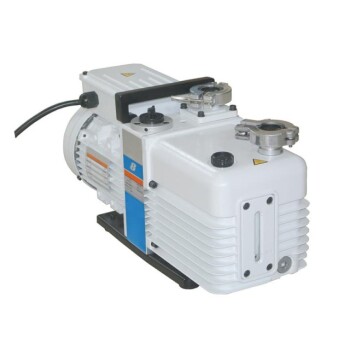The required vacuum level for a vacuum pump depends on the specific application and the desired pressure range. Vacuum levels are categorized into rough/low vacuum, fine/medium vacuum, high vacuum, ultra-high vacuum, and extreme high vacuum, each defined by specific pressure ranges. For industrial applications like vacuum grippers or vacuum cleaners, low to medium vacuums are sufficient, while laboratory applications such as particle reactors or accelerators may require high or ultra-high vacuums. A vacuum pump's performance is determined by its ability to achieve the desired pressure range, with some pumps capable of reaching pressures as low as -0.098MPa. Understanding the application's requirements is crucial for selecting the appropriate vacuum pump.
Key Points Explained:

-
Vacuum Levels and Pressure Ranges:
- Vacuum levels are categorized based on pressure ranges:
- Rough/Low Vacuum: 1000 to 1 mbar / 760 to 0.75 Torr.
- Fine/Medium Vacuum: 1 to 10^-3 mbar / 0.75 to 7.5^-3 Torr.
- High Vacuum: 10^-3 to 10^-7 mbar / 7.5^-3 to 7.5^-7 Torr.
- Ultra-High Vacuum: 10^-7 to 10^-11 mbar / 7.5^-7 to 7.5^-11 Torr.
- Extreme High Vacuum: < 10^-11 mbar / < 7.5^-11 Torr.
- These ranges indicate the scarcity of gas molecules, with lower pressures corresponding to higher vacuum quality.
- Vacuum levels are categorized based on pressure ranges:
-
Applications Determine Vacuum Requirements:
- Industrial Applications: Low to medium vacuums (1 to 0.03 bars) are typically sufficient for tasks like vacuum grippers, vacuum cleaners, and packaging.
- Laboratory Applications: High to ultra-high vacuums are required for specialized tasks such as particle reactors, accelerators, and semiconductor manufacturing, where minimal gas interference is critical.
-
Vacuum Pump Performance:
- The performance of a vacuum pump is measured by its ability to achieve specific pressure ranges.
- For example, solvent-resistant circulating water vacuum pumps can achieve pressures as low as -0.098MPa, making them suitable for a variety of applications.
-
Selecting the Right Vacuum Pump:
- When choosing a vacuum pump, consider the following:
- Pressure Requirements: Match the pump's capabilities to the required vacuum level.
- Application Environment: Ensure the pump is compatible with the operating conditions, such as exposure to solvents or corrosive gases.
- Pump Type: Different pumps (e.g., rotary vane, diaphragm, turbo-molecular) are designed for specific vacuum ranges and applications.
- When choosing a vacuum pump, consider the following:
-
Practical Considerations:
- Maintenance: Regular maintenance is essential to ensure consistent performance, especially in high-vacuum applications.
- Cost: Higher vacuum levels typically require more advanced and expensive equipment.
- Energy Efficiency: Consider the energy consumption of the pump, particularly for continuous or high-demand applications.
By understanding these key points, you can make an informed decision about the appropriate vacuum level and pump type for your specific needs. Always align the pump's capabilities with the application's requirements to ensure optimal performance and efficiency.
Summary Table:
| Vacuum Level | Pressure Range (mbar) | Pressure Range (Torr) | Common Applications |
|---|---|---|---|
| Rough/Low Vacuum | 1000 to 1 | 760 to 0.75 | Vacuum grippers, vacuum cleaners |
| Fine/Medium Vacuum | 1 to 10^-3 | 0.75 to 7.5^-3 | Packaging, industrial processes |
| High Vacuum | 10^-3 to 10^-7 | 7.5^-3 to 7.5^-7 | Particle reactors, accelerators |
| Ultra-High Vacuum | 10^-7 to 10^-11 | 7.5^-7 to 7.5^-11 | Semiconductor manufacturing |
| Extreme High Vacuum | < 10^-11 | < 7.5^-11 | Specialized research applications |
Need help selecting the right vacuum pump for your needs? Contact our experts today for personalized advice!










